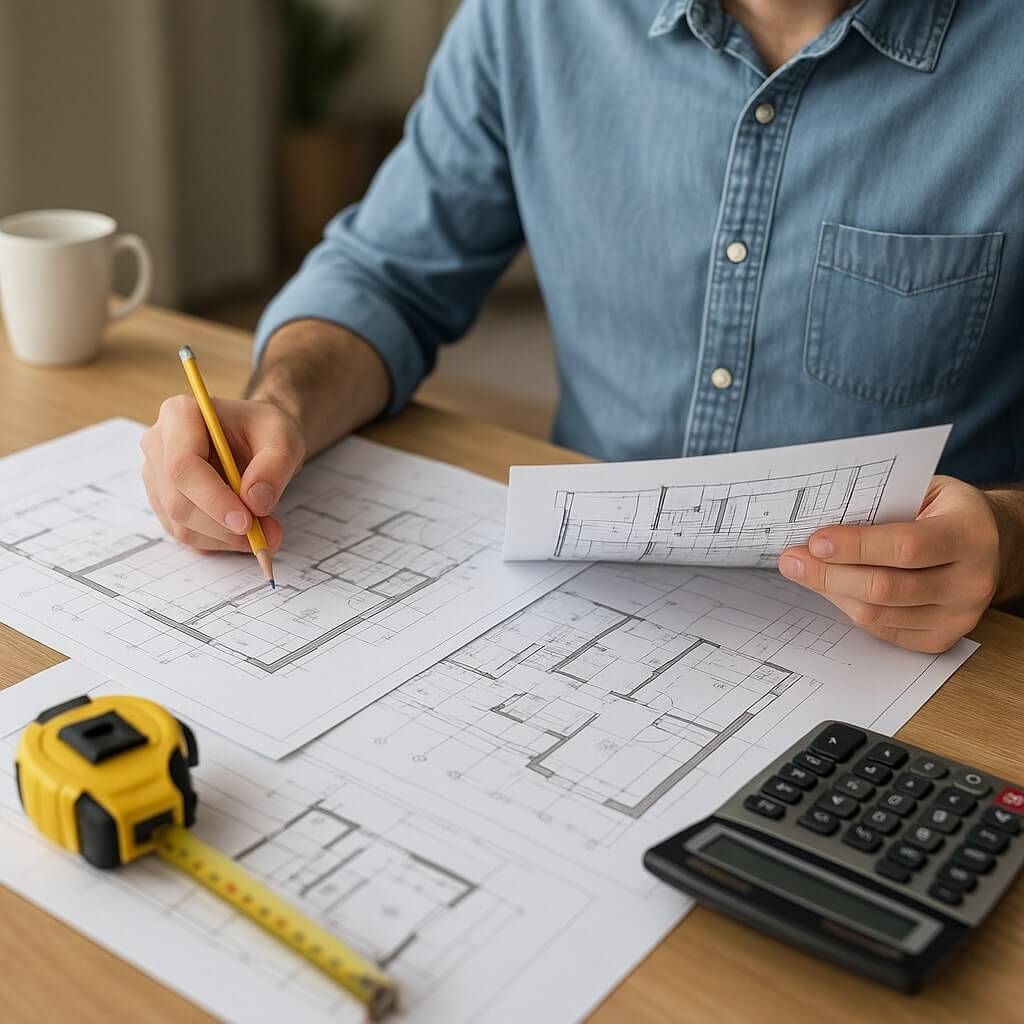When planning a home addition, you might underestimate the true costs involved. Many homeowners overlook critical elements that can inflate the budget considerably. From architectural fees to unexpected labor costs, these oversights can derail your financial plan. Understanding these common mistakes is essential for accurate budgeting. What are the specific pitfalls that often catch people off guard? Let’s explore these issues to help you avoid costly miscalculations.
Key Takeaways
- Failing to factor in design and architectural fees can lead to unexpected budget increases.
- Underestimating material costs, especially with high-quality options, often results in budget overruns.
- Ignoring labor expenses, particularly for skilled contractors, significantly impacts the overall project cost.
- Overlooking permitting and inspection fees can inflate the budget due to local requirements.
- Not including contingency funds of 10-20% for unforeseen expenses can strain finances during the project.
Failing to Account for Design and Architectural Fees
When estimating the cost of home additions, many homeowners overlook the essential aspect of design and architectural fees. You need to recognize that the design complexity and architectural style greatly impact these costs.
A simple addition might require minimal fees, but intricate designs or unique architectural styles can escalate expenses rapidly. Hiring a skilled architect guarantees your vision is realized, but their expertise comes at a price.
Underestimating Material Costs
Many homeowners fall into the trap of underestimating material costs during home addition projects. They often overlook material price fluctuations that can drastically affect the overall budget.
For instance, if you plan to use high-quality materials, you must account for potential increases in prices due to market demand or supply chain issues. Additionally, while opting for quality material selection is essential for durability, it typically comes at a higher cost than lower-grade alternatives.
Failing to accurately estimate these expenses can lead to budget overruns, leaving you financially unprepared and potentially compromising your project’s success. Always research and budget accordingly.
Ignoring Labor Expenses
One common oversight in budgeting for home additions is neglecting labor expenses.
Labor costs can greatly impact your overall budget, especially when you consider the need for a skilled workforce. Experienced contractors and specialists demand higher wages, but their expertise guarantees quality work and efficiency.
Failing to account for these expenses can lead to unexpected financial strain. Always obtain detailed quotes that break down labor costs separately, so you can better anticipate your total expenditure.
Overlooking Permitting and Inspection Fees
Although it may seem like a minor detail, overlooking permitting and inspection fees can greatly inflate your home addition budget.
Many homeowners underestimate the costs associated with permitting processes, assuming they’re straightforward. However, each locality has specific inspection requirements that can lead to additional fees if not accounted for.
You might face unexpected costs if you need to revise plans to meet local codes. To avoid financial surprises, it’s crucial to research your area’s permitting processes thoroughly.
Factor in these fees early in your budget to guarantee your project stays within financial limits and runs smoothly from start to finish.
Not Considering Contingency Funds
When planning a home addition, failing to include contingency funds can lead to significant financial strain.
Without adequate budget flexibility, you might struggle to cover unexpected expenses that arise during construction. These costs can stem from unforeseen structural issues, changes in material prices, or delays.
Establishing a contingency fund of 10-20% of your total budget gives you a safety net, ensuring that you’re prepared for the unexpected. Not planning for these contingencies could result in project delays or compromises on quality, ultimately impacting your home’s value and your satisfaction with the finished addition.
Prioritize a realistic budget to avoid these pitfalls.
Conclusion
To summarize, accurately estimating the cost per square foot for home additions requires careful consideration of all potential expenses. By acknowledging design fees, material costs, labor expenses, permitting fees, and setting aside contingency funds, you can avoid common pitfalls that lead to budget overruns. A thorough and detailed approach not only protects your finances but also guarantees your project runs smoothly, allowing you to achieve the desired outcome without unwelcome surprises. Plan wisely, and you’ll be better prepared.

